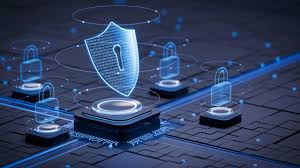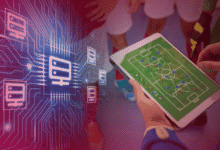Part 2 : 4 Alarming Cybersecurity Threats and How to Counter Them.
Smart Solutions You Need to Know in 2025

Multi-Factor Authentication(MFA) is also important in the fight against Cyber Attacks, it is a security measure that requires users to provide two or more verification factors to gain access to a resource, such as an application, online account, or VPN. MFA significantly reduces the risk of unauthorized access by adding additional layers of security beyond just a password. This could be a password, PIN, or an answer to a security question, it could also be a physical device like a smartphone, security token, smart card, or a one-time password (OTP) generated by an authentication app and the option of biometric verification methods such as fingerprint scans, facial recognition, or voice recognition exists as well. MFA provides an additional layer of protection because even if an attacker knows the password, they would still need access to the second factor (e.g., a smartphone) to gain entry. It aslo helps protect against common threats like password theft, keylogging, and brute force attacks. While it is better than no MFA, it is advised that SMS-based MFAs should only be used as a backup, or in conjunction with other forms of MFA because of the possibility of SIM-swapping attacks.
An often overlooked measure against cybersecurity challenges is regular Software Updates and Patch Management, by keeping systems and software up-to-date, organizations can close vulnerabilities that cybercriminals might exploit. Software often has bugs or vulnerabilities that hackers can exploit. Vendors release patches and updates to fix these security holes, ensuring systems are not easily compromised and these also often include performance improvements and bug fixes, which can enhance the overall functionality and stability of the software, making systems run more efficiently. It is advised to have a clear patch management policy that outlines the procedures for identifying, testing, and deploying patches while including roles and responsibilities, timelines, and criteria for prioritizing patches. (usually based on risk of vulnerability)
Incident Response Planning further enhances the possibilities of staying ahead of a potential or ongoing Cyber Attack. An effective incident response plan enables organizations to respond quickly and efficiently to these incidents, minimizing damage and restoring normal operations. It also helps to reduce downtime, improve incident detection and identification and ultimately protect the reputation of an organization as a trustworthy and reliable one.
There are emerging technological trends in Cybersecurity that will prove useful in the never-ending battle against cyber threats. Artificial Intelligence and Machine Learning are increasingly used to detect anomalies and recognize patterns indicative of cyber threats. These technologies enable automated threat detection, reducing the time required to identify and respond to attacks. By analyzing vast amounts of data, AI can predict potential threats before they occur, allowing organizations to take preemptive actions. ML algorithms can also adapt to new threats by learning from previous attacks, improving the accuracy and effectiveness of cybersecurity defenses over time.
The implementation of the Zero Trust model is another emerging trend, Zero Trust assumes that threats can originate from both outside and inside the network. It requires strict verification for every user and device attempting to access resources, enforcing least-privilege access policies. This approach emphasizes continuous monitoring of all network activity, rather than relying solely on perimeter defenses, to detect suspicious behavior and respond to incidents in real-time. Zero Trust uses micro-segmentation to isolate workloads and minimize the risk of lateral movement within the network in case of a breach. It also provides continuous monitoring of all network activity, giving organizations a detailed view of who is accessing what resources, from where, and how.
Blockchain Technology is also increasingly being used for security, blockchain is a decentralized and distributed digital ledger that records transactions across multiple computers, ensuring that the recorded information is secure, transparent, and immutable. Its decentralized and immutable nature makes it a strong candidate for ensuring data integrity and protecting against tampering. Blockchain can be used to create secure and decentralized identity management systems, reducing the risk of identity theft and fraud. It also provides a secure way to verify transactions, which can be applied to various cybersecurity applications, such as secure communications and transactions in IoT (Internet of Things) environments. Blockchain’s cryptographic and decentralized nature makes it highly secure, data is encrypted, and the decentralized network makes it difficult for hackers to alter information without being detected. The immutable ledger ensures that once a transaction is recorded, it cannot be changed or tampered with, providing data integrity. Blockchain also makes for faster transactions, traditional transaction processes can be time-consuming and require multiple intermediaries, Blockchain can streamline these processes, allowing for faster and more efficient transactions, for example, cross-border payments can be settled in minutes instead of days using blockchain technology.
Blockchain however has its own limitations, the networks can face scalability issues, particularly in terms of transaction speed and processing power. As the network grows, so does the demand on resources, leading to slower transaction times and higher costs and while blockchain is inherently secure, it is not immune to attacks. Risks such as 51% attacks, where a single entity gains control of the majority of the network’s computing power, can compromise the integrity of the blockchain. The decentralized and borderless nature of blockchain technology also raises regulatory and legal challenges. Governments and regulatory bodies are still grappling with how to regulate blockchain and cryptocurrencies effectively.
In conclusion, cybersecurity challenges like ransomware attacks, phishing scams, insider threats and data breaches are everywhere but we can prevent them from happening and avoid falling victim by being careful, vigilant and disciplined with info. Companies should also invest in training their employees in preparation against these attacks. Technological adavancements will also go a long way in alleviating the threat of Cyber Attacks. Cybersecurity is a dynamic and rapidly evolving field, driven by technological advancements, increasing digital transformation, and the ever-changing landscape of cyber threats. As organizations continue to integrate digital technologies into their operations, the potential for cyberattacks and data breaches also grows. The need to protect sensitive information, maintain customer trust, and comply with regulatory requirements has made cybersecurity a critical priority for businesses, governments, and individuals alike.






